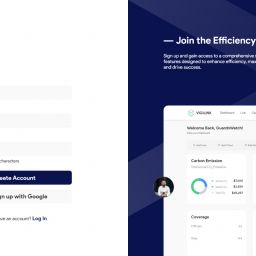8 Ways to Optimize Your Employee Shift Scheduling in 2023
Effective employee shift scheduling is vital for ensuring smooth operations, maximizing productivity, and maintaining employee satisfaction. In 2023, as businesses adapt to changing work environments and evolving workforce dynamics, it becomes crucial to optimize shift scheduling practices. In this article, we will explore eight key strategies to help you optimize your employee shift scheduling and achieve better outcomes for your organization.
1. Embrace Flexible Scheduling Options:
Incorporate flexible scheduling options into your shift scheduling process. Offer employees the opportunity to choose their preferred shifts or allow for shift swaps among employees. This approach empowers employees, enhances work-life balance, and reduces scheduling conflicts.
2. Leverage Workforce Management Software:
Invest in workforce management software that streamlines the scheduling process. These tools automate shift scheduling, consider employee availability, skills, and preferences, and optimize shift assignments. Workforce management software helps eliminate errors, reduces administrative burden, and ensures fair distribution of shifts.
3. Use Data-Driven Insights:
Leverage data analytics to optimize shift scheduling. Analyze historical data, such as customer demand patterns, peak hours, and employee productivity metrics, to identify optimal staffing levels for each shift. Data-driven insights enable you to align staffing with demand, minimizing overstaffing or understaffing scenarios.
4. Implement Rotating Shifts:
Consider implementing rotating shifts to distribute workload and provide variety for employees. Rotating shifts allow employees to experience different shifts, promoting cross-training, and preventing monotony. This approach ensures fair distribution of less desirable shifts and creates a more engaged and motivated workforce.
5. Plan for Breaks and Rest Periods:
Ensure that shift schedules incorporate adequate break and rest periods. Comply with labor laws and regulations regarding rest breaks and meal periods to promote employee well-being and productivity. Avoid scheduling long stretches without breaks to prevent burnout and maintain optimal performance.
6. Communicate Transparently:
Maintain clear and transparent communication with employees regarding shift schedules. Provide schedules well in advance, allowing employees sufficient time to plan their personal commitments. Establish channels for employees to express their scheduling preferences or raise concerns, and be responsive to their needs.
7. Balance Employee Preferences and Business Requirements:
Strive for a balance between employee preferences and business requirements when creating shift schedules. Consider employee availability, preferences, and seniority while ensuring adequate coverage for critical shifts. Find creative solutions to accommodate employee needs while meeting operational demands.
8. Regularly Review and Adjust:
Regularly review and evaluate your shift scheduling practices. Seek feedback from employees and supervisors to identify areas for improvement. Assess the effectiveness of scheduling strategies, analyze key performance indicators, and make necessary adjustments to optimize scheduling processes.
Conclusion:
Optimizing employee shift scheduling in 2023 requires a proactive and data-driven approach. By embracing flexible scheduling options, leveraging workforce management software, using data analytics, implementing rotating shifts, planning for breaks, communicating transparently, balancing employee preferences with business requirements, and regularly reviewing and adjusting schedules, organizations can achieve more efficient and employee-friendly shift scheduling practices. A well-optimized shift scheduling process not only enhances productivity but also fosters employee satisfaction, engagement, and retention, contributing to the overall success of the organization.
















